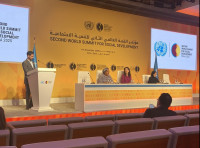Opinion
Let NARC do its job
When the Prime Minister Agriculture Modernisation Project (PMAMP) was conceived, its framers must have thought about where the required improved technology would come from.
When the Prime Minister Agriculture Modernisation Project (PMAMP) was conceived, its framers must have thought about where the required improved technology would come from. Naturally, the name of the Nepal Agricultural Research Council (NARC), an institution dedicated to exploring new technology to increase farm productivity, would have come up. It is true that technologies can be borrowed, but they still have to be put through adaptation tests under local environment and socio-economic conditions before they can be applied. Therefore, new and essential knowledge that is needed by such a project has to come from research institutions like NARC.
Efficient and effective research
When the NARC was established in 1991, the country was spending less than 0.2 percent of its agricultural gross domestic product (AGDP) on farm research. More than two decades since then, government spending on research has remained consistently below 0.5 percent of the AGDP. The World Bank has recommended that countries invest 2 percent of the AGDP on agricultural research. Most developed countries spend more than 2 percent, making research efficient, effective and more competitive.
In our context, agricultural productivity is being held back, competitiveness in the food market is being undermined and our national prosperity is being unnecessarily limited because agricultural research does not get adequate funding. Despite a lot of talk about modernising and commercialising our agriculture sector, it is still little beyond bare subsistence. It is also at the mercy of the monsoon. Until agricultural research is supported and research comes forward with improved technologies that are economically and environmentally workable, the PMAMP will have little relevance.
Lack of interest in research within the Ministry of Agricultural Development (MoAD) is shown by the formation of the National Agricultural Research and Development Fund (NARDF) by duplicating research work mandated to the NARC. Since the NARDF does not have research staff, laboratory and infrastructure, most of its research proposals are awarded to NARC staff in the name of competitive grants. This has encouraged NARC staff to neglect their duties, which is taking a toll on its research activities. The Agriculture Development Strategy (ADS) too has recommended that the NARDF be abolished as it has not been approved by Parliament.
It is commonly thought that plenty of fertilisers, irrigation systems and plant protection chemicals combined with high yielding crop varieties and mechanisation will make agriculture flourish. However, experience has shown that the success of high energy technologies is often short-lived and they eventually lead to serious environmental degradation. We have seen in recent years how inappropriate technologies have degraded our soils, polluted water resources, destroyed marginal lands and reduced biodiversity assets. Our scientists face the challenge of developing technologies that are high yielding and sustainable both economically and environmentally. To achieve this, there is only one way, and that is generating knowledge through research.
Generating knowledge
The technologies that the PMAMP needs will come from research institutes like the NARC if they are allowed to function freely without interference. Recently, reports have been circulating that the NARC will be dissolved and a Department of Agricultural Research and Development will be formed. The government must have a valid reason to separate research from the Department of Agriculture. Agricultural research will not function effectively in a 10-to-five bureaucratic setup. It
is a continuous process where scientists need to look after their experiments round the clock. Research is not like a water tap which can be turned on and off as and when needed. They need to proceed steadily as adequate and appropriate staff, equipment and facilities are developed. Wastage and inefficiency is certain to occur if the NARC turns into a playground for ministers and bureaucrats in the MoAD.
As new technology becomes available, it has to be disseminated and used. This is never an easy task, and it is more difficult when the key players, the farmers, are illiterate, poor, and inadequately supported by research, extension and training, market, credit and infrastructure, and policies that are needed to modernise and commercialise agriculture. A dispassionate analysis of the present state of the NARC and the Department of Agriculture reveals that neither the research base that is required to produce essential knowledge, nor the extension, education and training base that is needed to disseminate the new knowledge are capable of doing the job. Because of political interference, the staff have become so frustrated that their efficiency has been affected negatively.
Moreover, the manner in which the NARC has been treated by the MoAD and the Ministry of Finance (particularly on the pension issue) gives little reason to be optimistic. The state of affairs has spread a serious demotivating and demoralising influence among the young scientists at NARC. This has led to a so-called brain drain by using the NARC as a springboard. And because of this situation, the NARC is in serious disarray. Who is responsible for such a situation? It will be challenging, if not impossible, for the PMAMP to obtain new technologies that it needs to achieve its objectives if the MoAD’s attitude towards the NARC does not change. If the NARC is dissolved without considering the ramifications of the move, the effort to modernise Nepal’s agriculture sector is certain to be hindered.
Joshy is a former executive director of the Nepal Agricultural Research Council




 16.12°C Kathmandu
16.12°C Kathmandu









